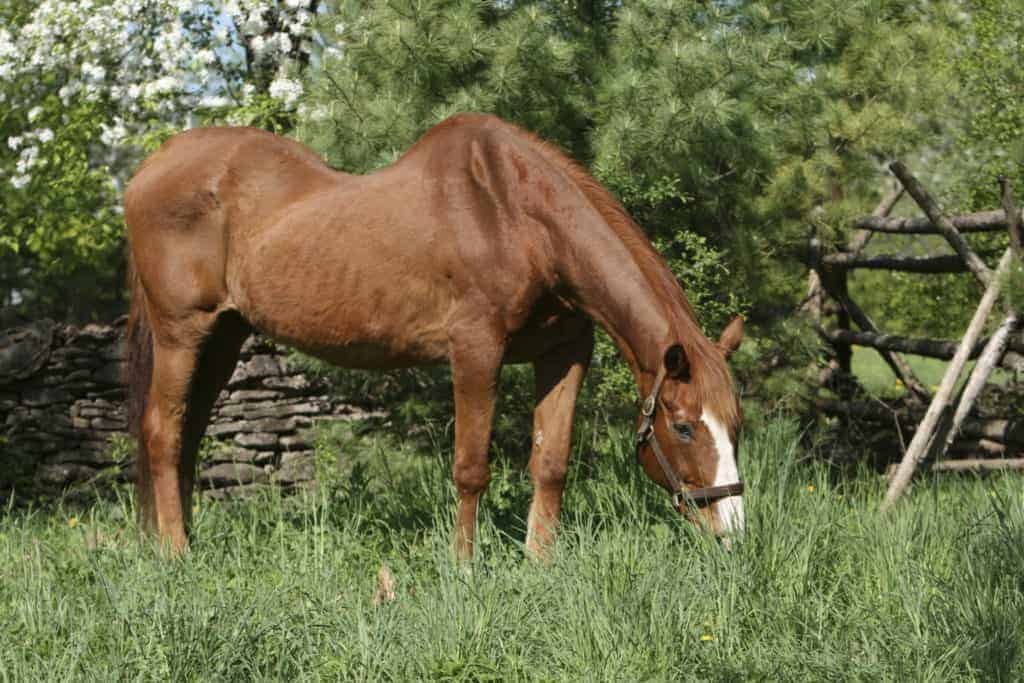Prosthetic Limbs for Horses: A Closer Look
Horses have traditionally been considered obligate four-legged animals; however, the dogma is changing.
News and issues for equine health professionals
Horses have traditionally been considered obligate four-legged animals; however, the dogma is changing.
New stem cell research findings from human and veterinary medicine that will likely impact treatment of horses and dogs will be presented June 2-4 during the North American Veterinary Regenerative Medicine Association’s (NAVRMA) second annual meeting
In certain cases of navicular disease, drilling a hole into the navicular bone–a procedure called core decompression that’s commonly used to treat human osteonecrosis (bone death caused by poor blood supply to the area)–might provide a new
The year 2011 marks the 250th anniversary of the so-called “modern” veterinary profession.

Clearly defined diagnostic criteria could help veterinarians detect BFS earlier and more accurately.
A horse’s body temperature can indicate everything from an internal ailment (such as colic) to an infectious disease to hypothermia. Or it can simply confirm that a horse is healthy and ready for action. While most owners and veterinarians step to
During the 2010 calendar year, 95,384 serum samples were tested for equine infectious anemia (EIA) in Kentucky with no positive animals being discovered. Of these, 84,111 samples were collected and tested to comply with state regulations governing
The Equine Sciences Academy (ESA) has recently named equine nutritionist Juliet M. Getty, PhD, to their panel of advisors. Getty joins a group of industry leaders who review, critique, and contribute materials to ESA courses.

The starry sky pattern is an unusual and dramatic ultrasonographic appearance of the equine liver.
The owners of a high-profile Tennessee Walking Horse breeding farm have been suspended from participating in horse shows and other equine-related activities for one year for allegedly violating the Horse Protection Act (HPA).

Ultrasonography, along with endoscopy, can be a supplemental resource veterinarians can use to diagnose roaring.
What do a horse’s stress level and his saliva have in common? Belgian scientists have found testing the former can measure the latter, and they said this saliva assay could become the test of choice for measuring horses’ stress. “Cortisol levels are

Regenerative medicine describes a group of techniques that uses the body’s natural ability to heal. Platelet-rich plasma is a regenerative therapy that can be used to treat horses with tendon and ligament injuries, arthritis, and certain wounds.
Extracorporeal shock wave therapy is an increasingly popular treatment method for equine injuries. During a presentation at the 2011 Western Veterinary Conference, held Feb. 20-24 in Las Vegas, Nev., Scott McClure, DVM, PhD, Dipl. ACVS, of Iowa
A technology commonly used in human medicine would provide veterinarians with a quick, noninvasive alternative for diagnosing fungal keratitis in the equine eye, according to a researcher from Cornell University. Equine fungal keratitis is a common
Mandi Lopez, DVM, MS, PhD, Dipl. ACVS, associate professor in the Department of Veterinary Clinical Sciences, has received one of 17 research grants from the Grayson-Jockey Club Research Foundation for her project, “Equine Bone Regeneration with
Stay on top of the most recent Horse Health news with
"*" indicates required fields